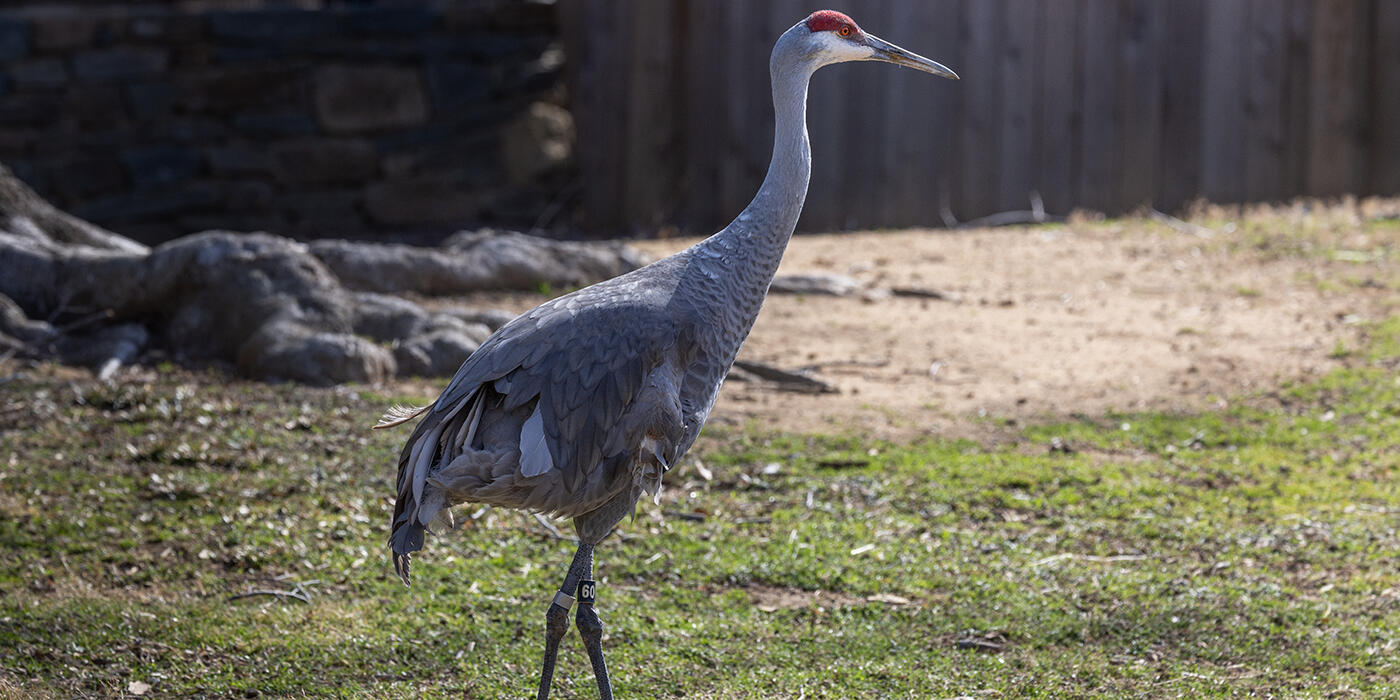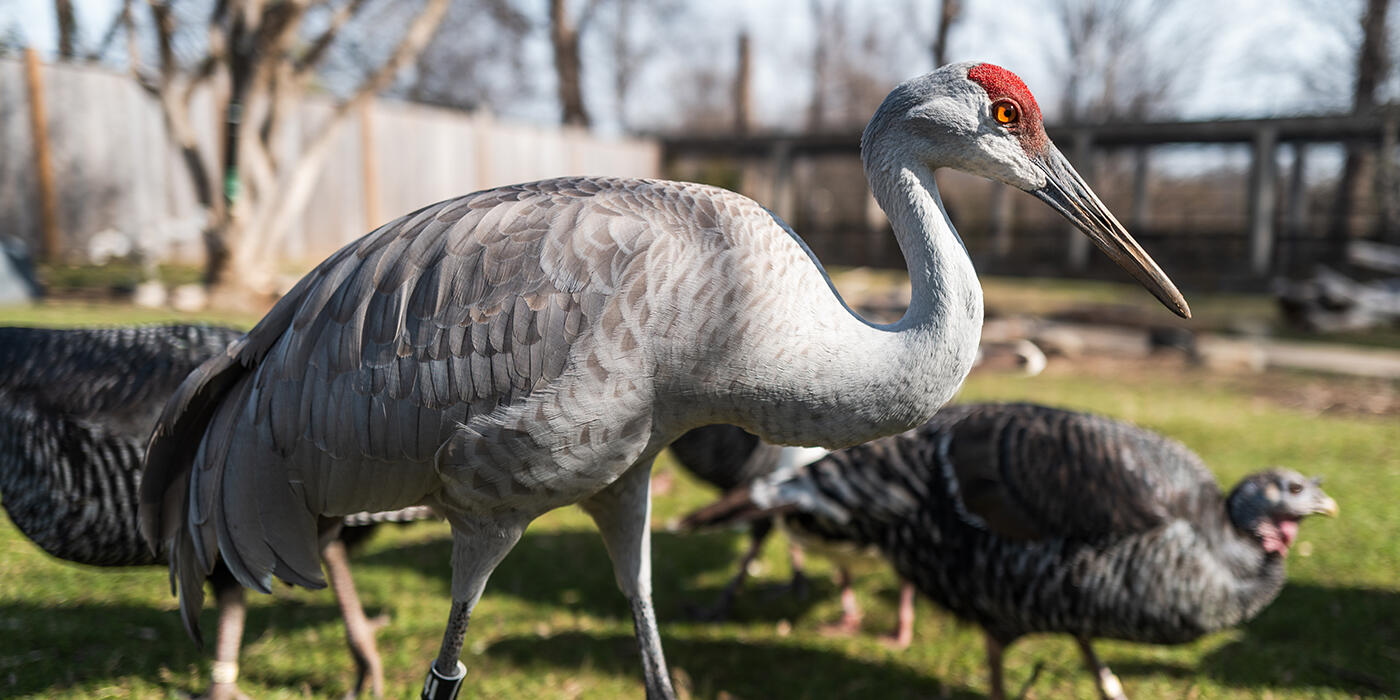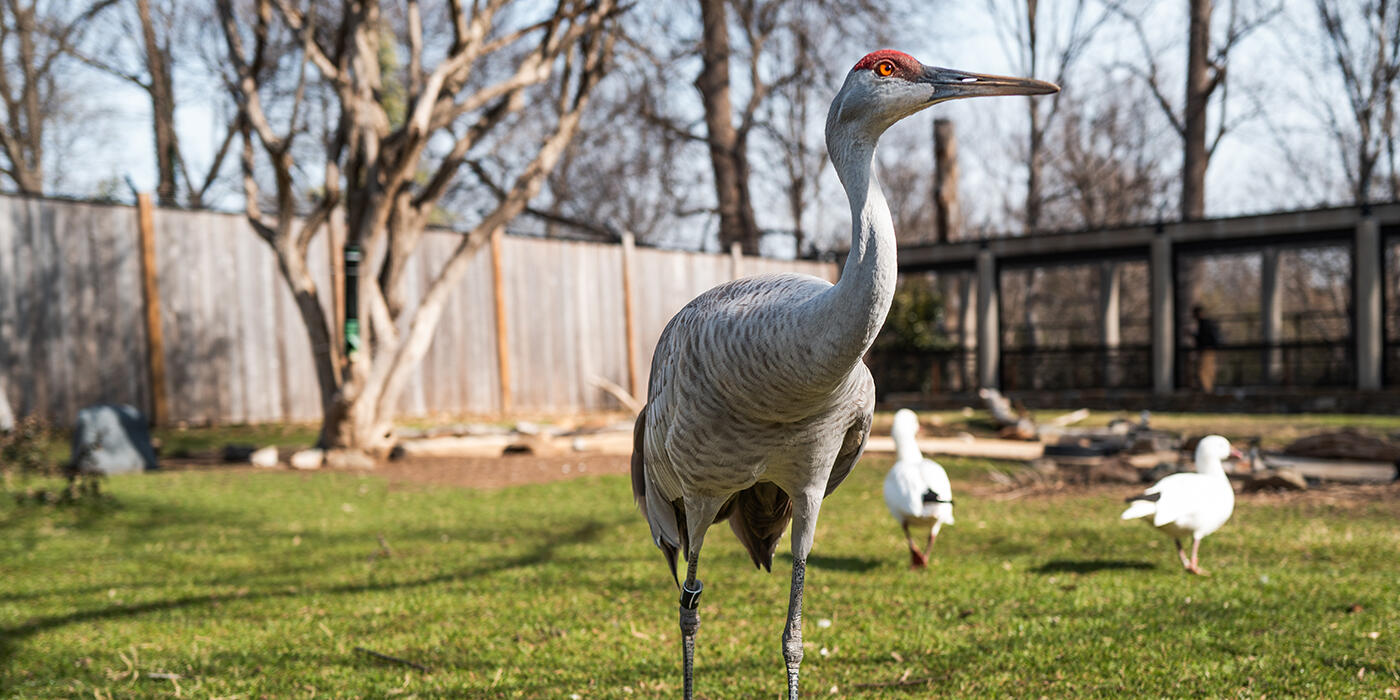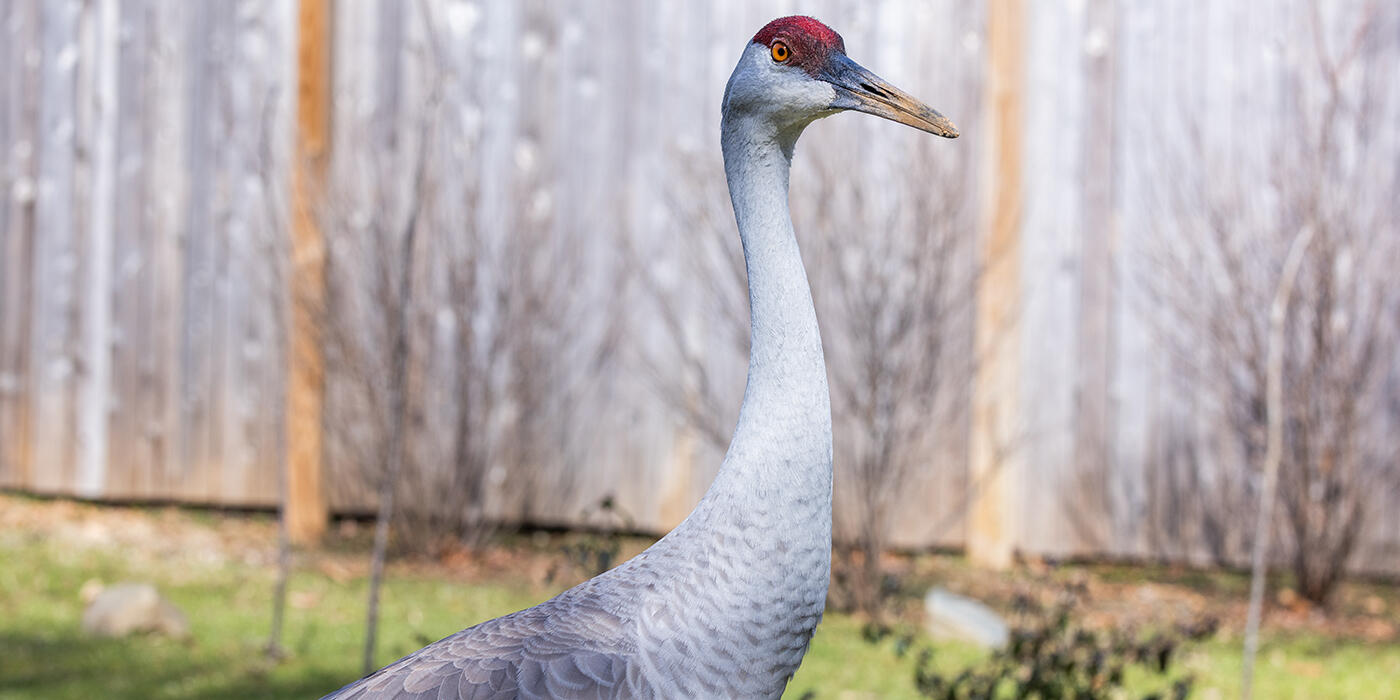Physical Description
Overall gray in color with some tan body feathers, both sexes have a bright red patch on their head and white patches on their cheeks. They have long, pointed beaks, which are dark gray on color. They have long, gray legs, which trail behind them during flight. Juveniles have a sandy brown coloration until they reach adulthood.
Size
Sandhill cranes are generally considered to be one of the taller birds native to North America. Adults have impressive wingspans, ranging from 5.5 feet to 6.5 feet from tip to tip. They stand 3 to 4 feet (0.9-1.2 meters) tall, and weigh between 7 and 11 pounds (3-5 kilograms).
Native Habitat
Sandhill cranes are normally found in open areas near water. They live in prairies, swamps, agricultural fields, river valleys, and—in the northernmost parts of their range—marshy tundra.
Lifespan
These birds can live for 20 years or more.
Communication
They are best known for their rattling trumpet call, which can be quite loud. When mated, males and females will stand close together and make this call in unison.
Food/Eating Habits
Sandhill cranes are omnivorous. Seeds, berries and roots are common food items, and, depending on availability, crop plants like corn and wheat grains. They will also eat small animals like rodents, snails, insects, frogs, lizards and nestling birds.
They use their pointed beaks to probe for food in marshy areas. However, unlike herons, they rarely wade into open water and hunt for fish.
Sleep Habits
Most sleep standing on one leg in shallow water with their heads and necks tucked under their shoulders.
Social Structure
Sandhill cranes are fairly social. They often live in small groups or family units.
During migration, they will join same-species flocks, and often winter together in huge flocks. Some wintering grounds, like the Bosque del Apache National Wildlife Refuge in New Mexico, hold up to 10,000 individuals.
Reproduction and Development
Depending on which food resources are available, sandhill cranes will either live in an area year-round or migrate northward in the warmer months to build nests and raise their young.
Once they have identified a potential mate, males will perform a courtship dance, which involves bobbing their heads and jumping in the air. They are monogamous but will find a new mate if their partner dies or leaves.
They typically nest in open wetland areas and build their nests in shallow water. Both parents build the nest together, using nearby plants like cattails and reeds. Females lay between one and three (but usually two) eggs, which are dull brown with brown or gray markings. Both parents take turns incubating the eggs for about a month until the chicks hatch.
Chicks are born with their eyes open and covered in downy feathers. They are ready to walk and leave the nest a day after hatching and are capable of flying after about two months. However, the chicks need nine to 10 months of close parental care before they are ready to live on their own.
Young sandhill cranes fly with their parents during migration. Their large wingspan allows them to soar, conserving energy by coasting along thermal updrafts as opposed to constantly flapping their wings to stay in the air.
Conservation Efforts
Overall, sandhill crane populations have rebounded since their low point in the mid-20th century. However, some local groups and subspecies have been designated as threatened or endangered. Common threats include nest predation, hunting, habitat loss and environmental degradation.
Help this Species
Reduce, reuse and recycle — in that order! Cut back on single-use goods, and find creative ways to reuse products at the end of their life cycle. Choose recycling over trash when possible.
Practice ecotourism by being an advocate for the environment when you’re on vacation. During your travels, support, visit or volunteer with organizations that protect wildlife. Shop smart too! Avoid buying products made from animals, which could support poaching and the illegal wildlife trade.
Organize or attend a stream, river, lake or other waterway cleanup in your area to preserve aquatic habitats for local species.
Avoid single-use plastics, such as plastic bottles, bags and utensils. Choosing reusable options instead can help reduce plastic pollution.
Conservation starts with you! Join a citizen science project where you can help collect valuable data for scientists. Encourage your friends and family to get involved too.
Protect local waterways by using fewer pesticides when caring for your garden or lawn. Using fertilizers sparingly, keeping storm drains free of litter and picking up after your pet can also improve watershed health.
Smithsonian's National Zoo and Conservation Biology Institute. (n.d.). Sandhill crane. Retrieved December 2, 2025, from https://nationalzoo.si.edu/animals/sandhill-crane
Animal News

Giant Panda Qing Bao Gets a Checkup ›

7 Spooktacular Animal Facts for Halloween ›




